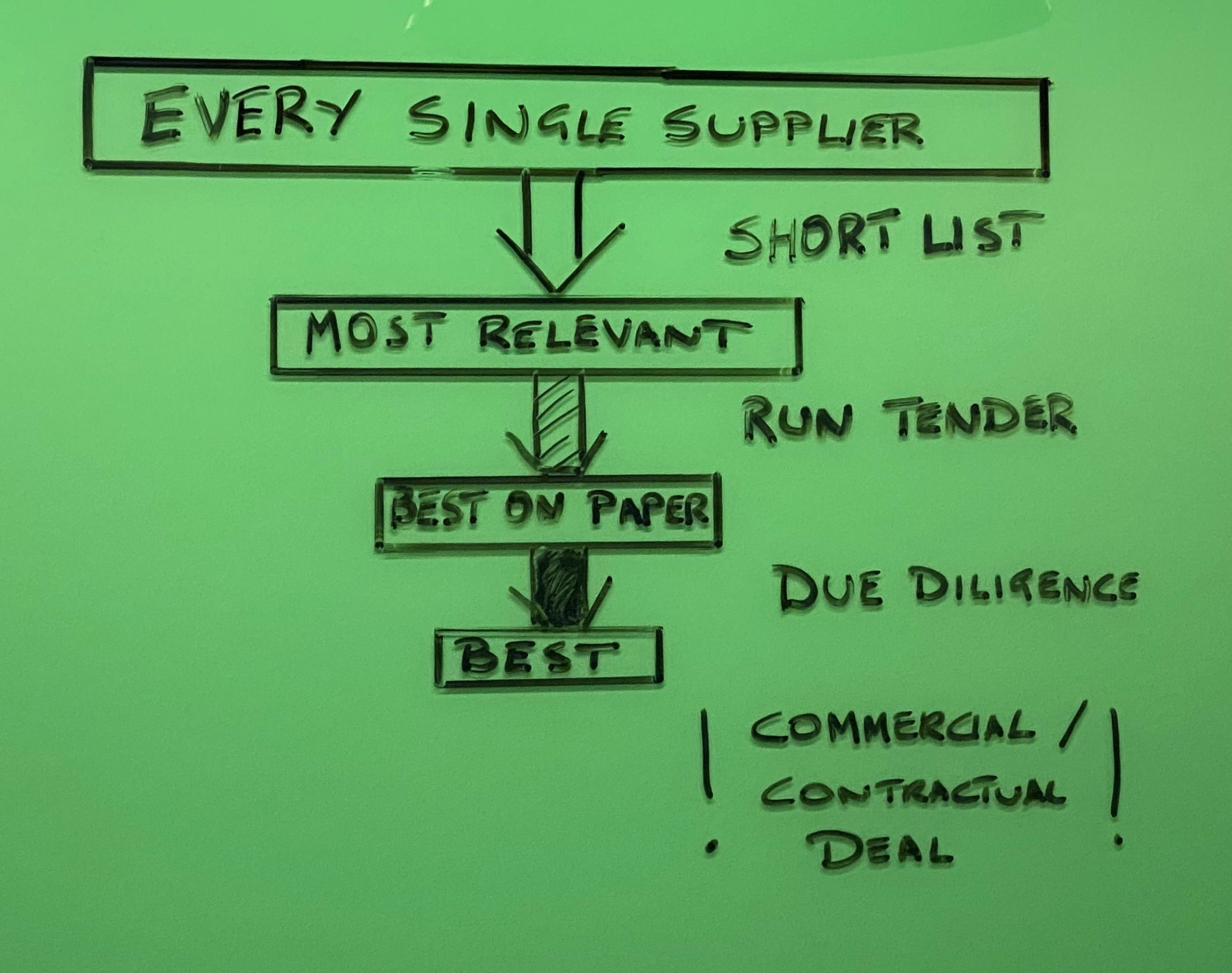
Getting the wrong supplier can cost you time, money and often your reputation. Follow these simple steps to make sure you get it right.
Time needed: 60 days
Getting the wrong supplier can cost you time, money and often your reputation – after all – you chose them!
Follow these simple steps to make sure you get it right.
- Shortlist all potentials
Within any marketplace there are usually a lot of companies to chose from. Too many to include in a tender so undertake a shortlisting exercise first. Be clear with what you MUST have. In this example, we MUST have XYZ. There are 20 firms who provide the type of product or service we need, but on closer inspection, only 8 can provide XYZ. The others may get close, but not exact so immediately we can reduce the tender size from 20 to 8.
- Run the tender
There are 3 main types of tender that you can run depending on how detailed (or not) your requirements are.
Request For Information (RFI)
You have a general idea of what you need but not necessarily how it would work from start to finish. You may also have various options and do not know which is best. In this case issuing an RFI is the best option.
Request For Proposal (RFP)
You know what you need to quite a detailed point and need to establish how this might be achieved and what the costs might be. These costs may also vary depending on what is delivered so decisions on that need to be made. In this case issuing an RFP is the best option.
Request For Quotation (RFQ)
You know EXACTLY what it is you need, and exactly how it needs to work. Your specifications are clear and unambiguous. You need to understand costs and time for delivery. In this case issuing an RFP is the best option.
Some procurement departments will issue a RFI, then an RFP/RFQ as their understanding becomes clearer. - Due Diligence
Having run through your process you have a clear winner in your tender. On paper at least. In order to ensure that the reality matches the tender responses you should now verify what you have been told. This will usually entail;
– Undertaking background checks on the company (trading history etc)
– Checking that the company is financially viable
– Visiting the operation to ensure that it is exactly what you have been told it is - Agree contract and final commercials!
Are you short on time?
Use these templates to help with this Best Practice:
Company Comparison Tool
The comparison tool enables you to score companies, projects or even people against a weighted criteria (automatically calculated)
See: Company Comparison ToolTender Analysis (Excel)
A complete tender analysis scoring matrix ready to be used with full question sets included. Weighted according to current requirements, this matrix allows you to run a full Request For Information (RFI) then score responses.
See: Tender Analysis (Excel)Business Topics that support this Best Practice
Procurement and Supply Chain Templates
Playback Document
A Playback document is a pre-agreement that covers the terms of commercial offering. It is used to ensure that both parties involved in a commercial transaction are on the same page about what is expected.
See: Playback DocumentComparison Template
A stylish PowerPoint comparison template which lets you quickly and effectively show the difference between different companies or products.
See: Comparison TemplateSupply Chain and Procurement Management (Powerpoint)
A guide to supply chain and procurement activity to enable cost control of a supply chain. Provides an overview and detail of what to do.
See: Supply Chain and Procurement Management (Powerpoint)Supply Chain Costs Template (PowerPoint)
A step by step guide showing you how to establish and present your supply chain costs and how to start making savings.
See: Supply Chain Costs Template (PowerPoint)